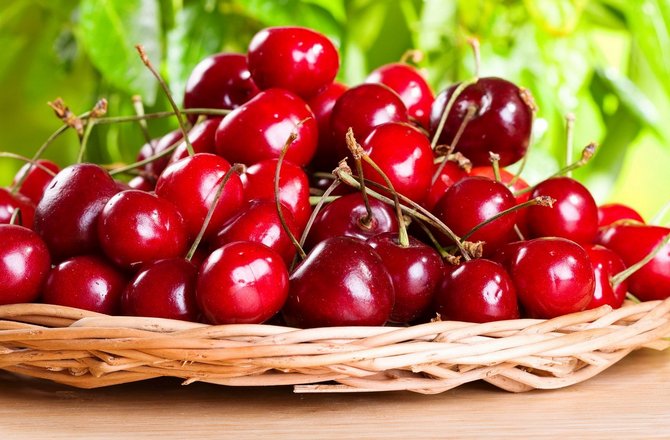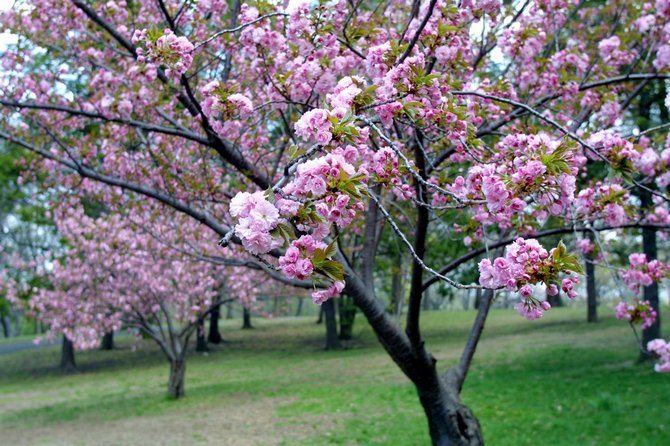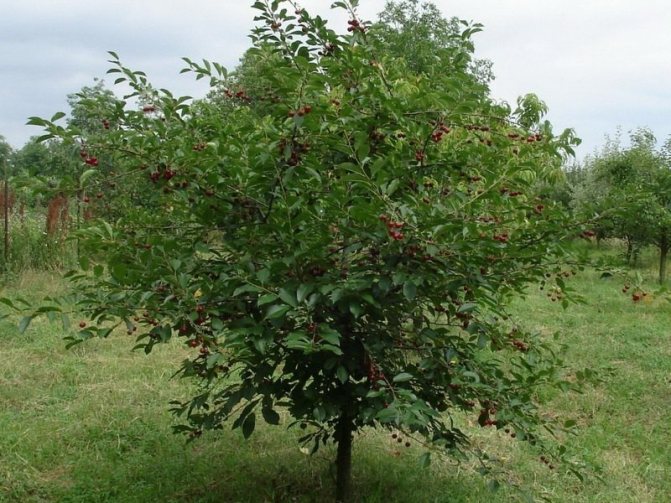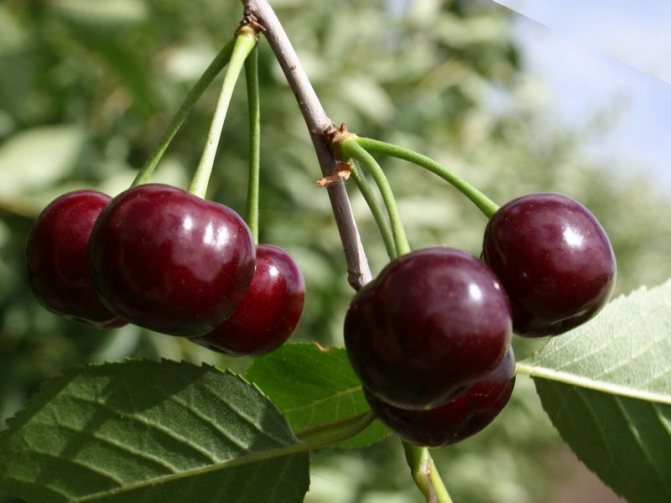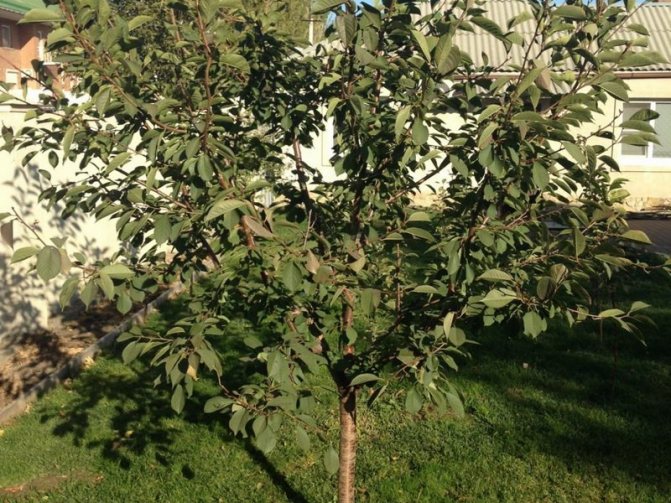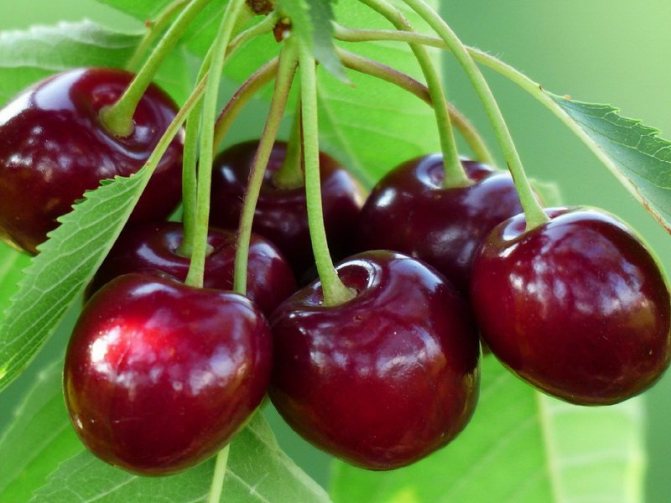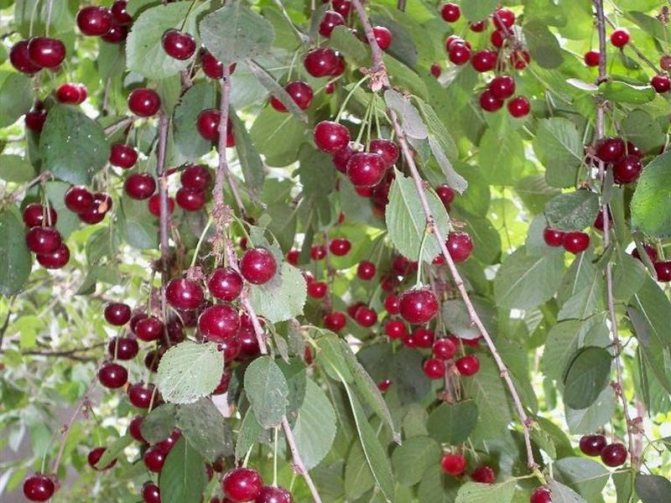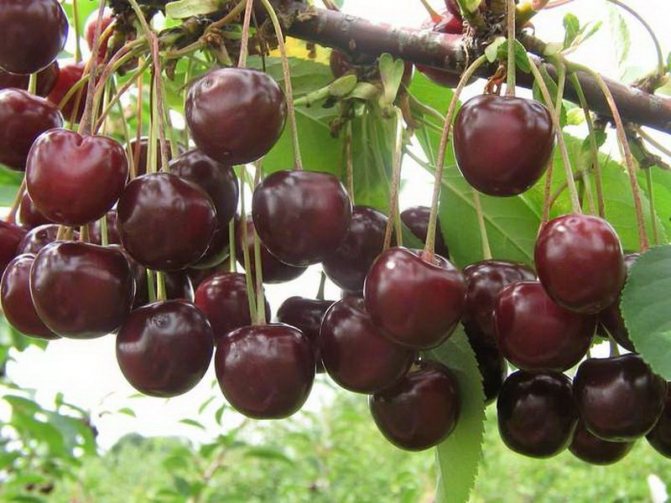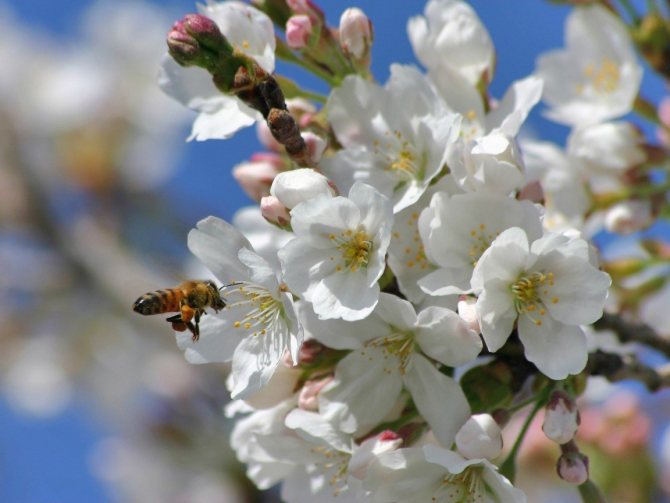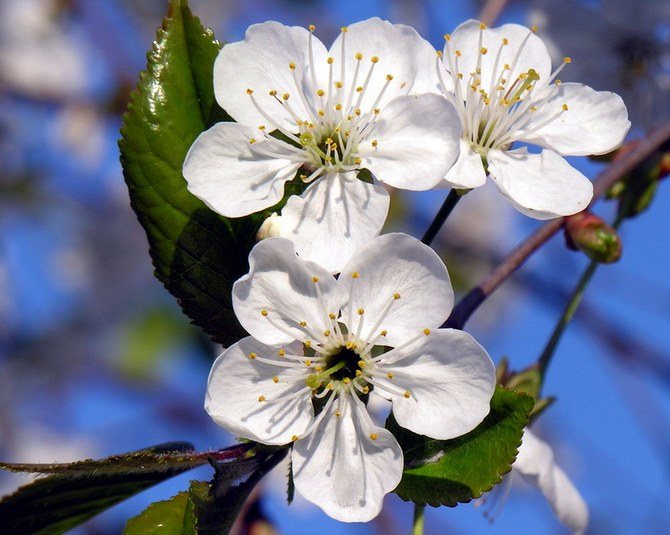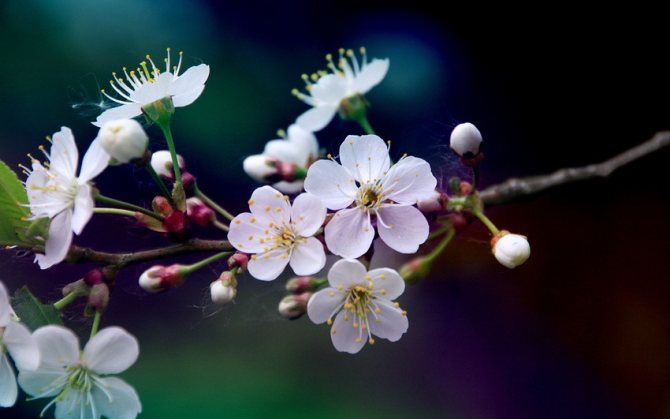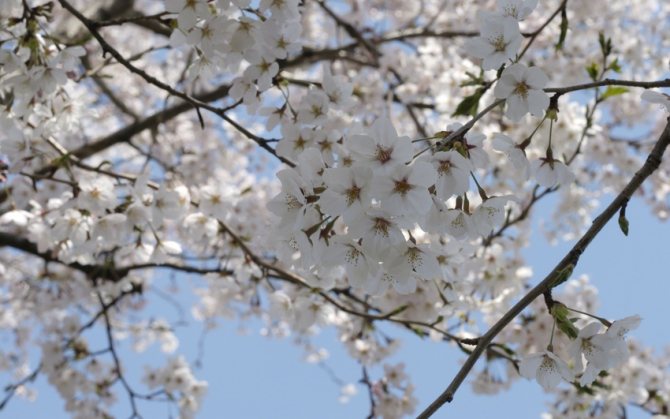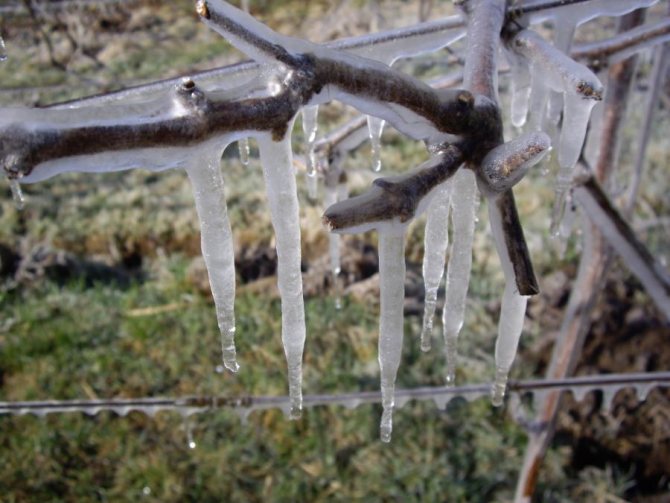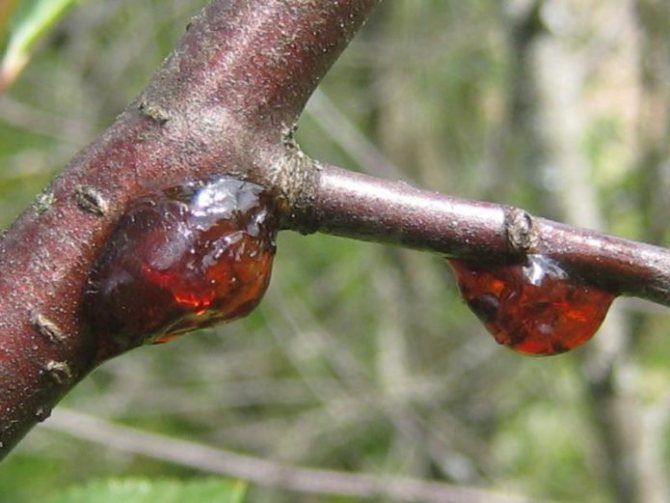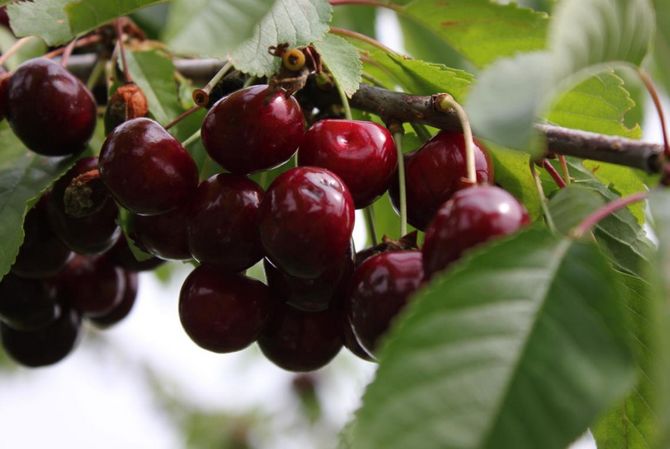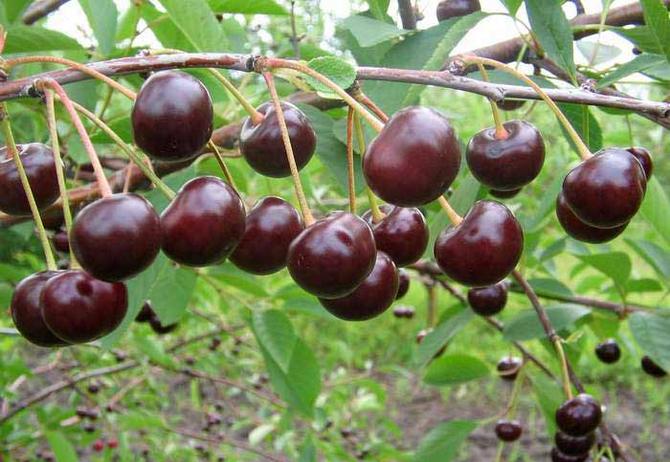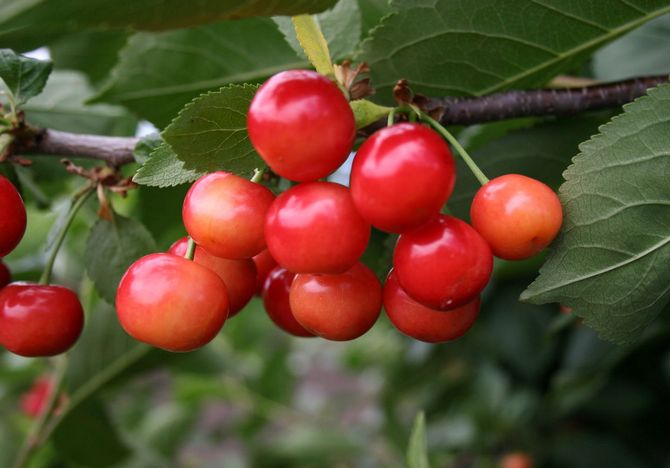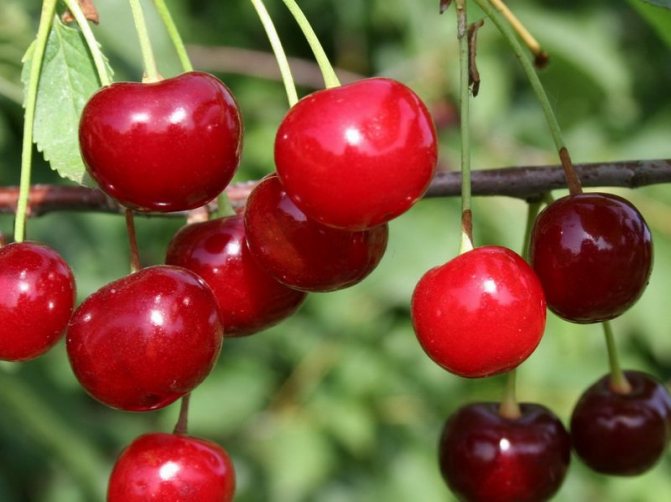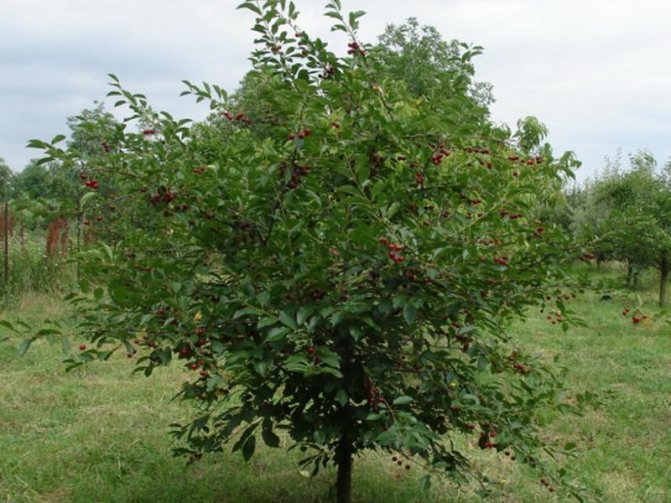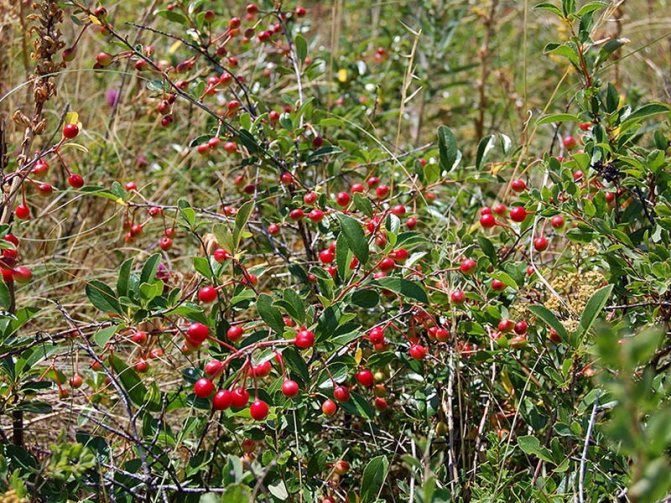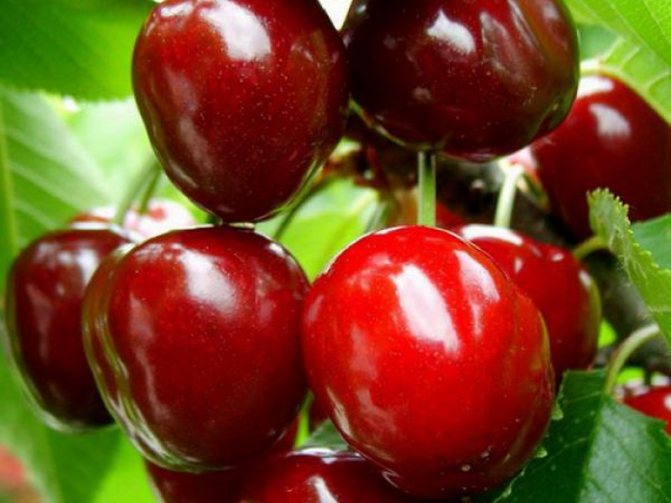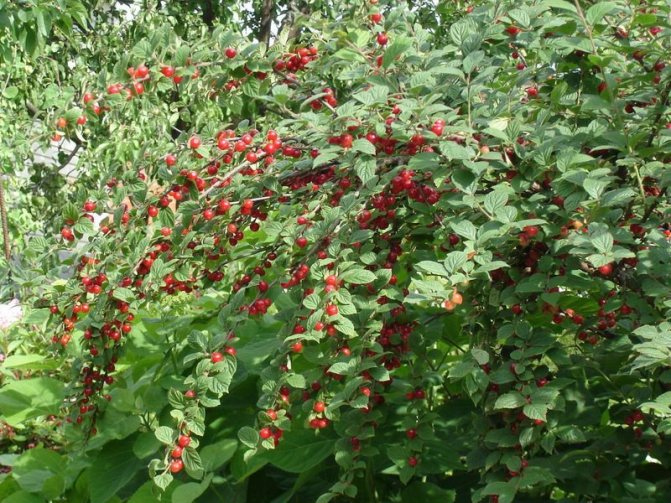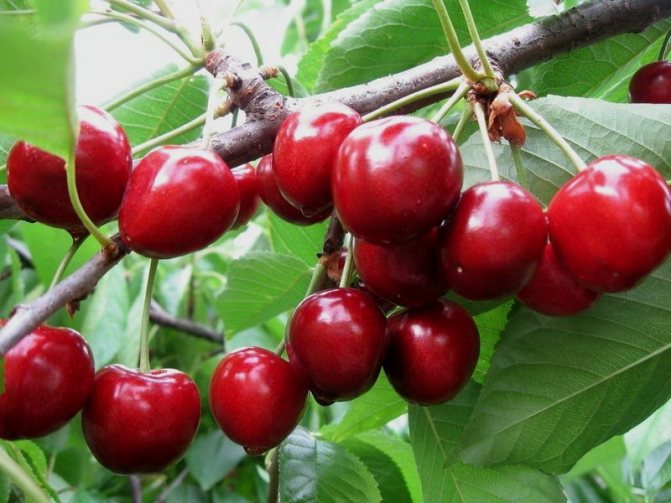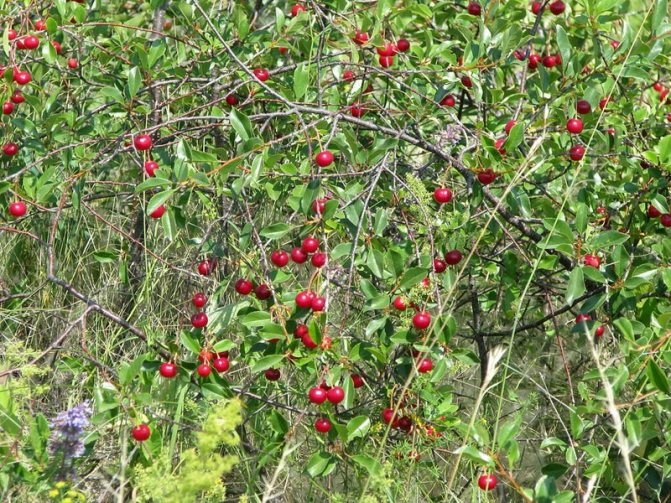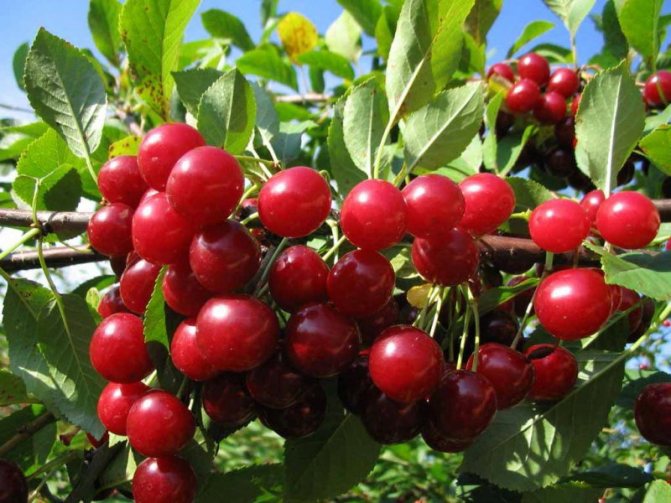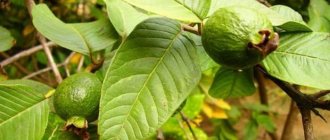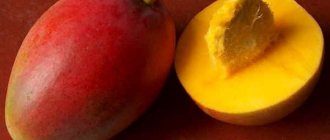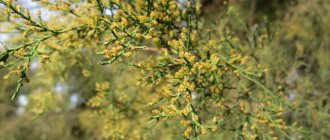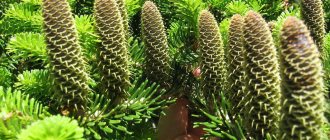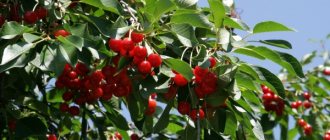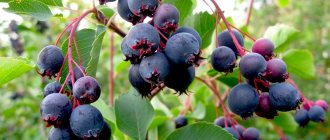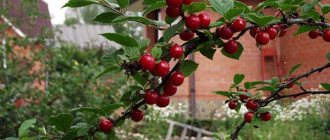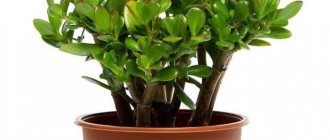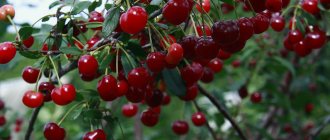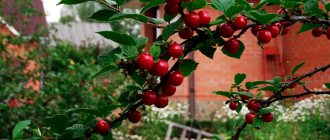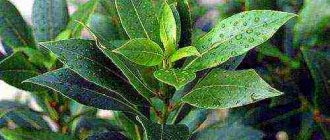Cherry is a root-sprouting shrub or tree, reaching a height of 7 meters, a family of rosaceous, cherry flowers are painted either in boiling white or pale pink, and are collected in corymbose inflorescences. Flowering is possible from late April to late May. The cherry fruit is a drupe, with a juicy pericarp, colored in tones from light reddish to deep blood red. In the wild, the species of domestic cherries is not known. Perhaps this is a hybrid between bird cherry (sweet cherry) and steppe cherry.
This plant has long been known to mankind who lived in Europe. In Moscow, the first gardens were laid by Yuri Dolgoruky. From Kievan Rus cherry bushes and trees are planted in many peasant gardens.
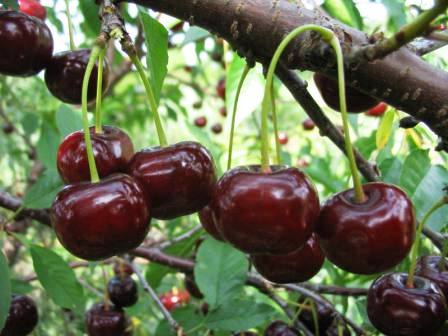
No wonder people fell in love with cherries. They contain many different sugars, pectin, various organic acids, vitamins (C, PP, B2, B6), coumarins. The latter normalize blood density and coagulability. And the easily digestible iron compounds in dark red cherries help well with anemia. The cherries themselves can be eaten not only raw, but also frozen, processed and canned into jams, compotes, and wines.
Characteristic
Cherry is a perennial plant and belongs to stone fruit crops. Fruiting of the plant begins 2-4 years after planting it in open ground.
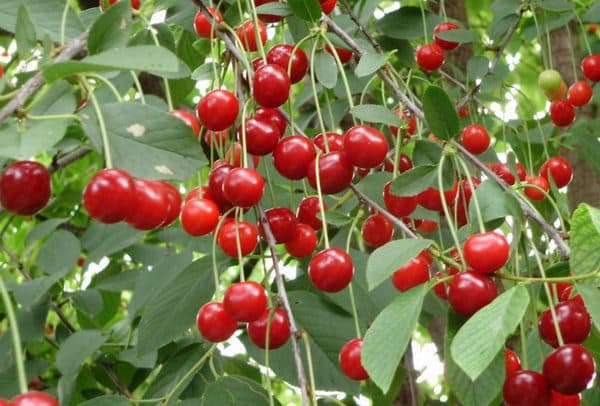

Cherry is a fairly frost-resistant crop, and it also easily tolerates drought and lack of moisture.
This plant has a high regenerative capacity, therefore, even heavily frozen parts of the plant do not die, and retain their vegetative abilities after being hit by cold. The shrub variety has a lifespan of 15-20 years, while the tree cherry lives about twice as long. Considering cherry as a biological object, the following characteristics can be distinguished:
- root system;
- sheet type;
- type of fruits and their varieties;
- kidneys;
- flowering period;
- ripening terms;
- useful properties of fruits.
Root system
The plant has a developed root system, which is divided into horizontal and vertical parts. The horizontal roots are very developed, so the bush can give numerous root shoots and, with good care, take over an increasingly large area of the garden. Vertical roots can go 3-6 meters deep into the soil and firmly hold the plant. The roots actively absorb moisture and nutrients, providing the aerial part with the necessary elements.
Sheet type
The leaves are oblong with small teeth of bright green color. They contain many useful substances and are used as a remedy for various diseases and as cosmetic additives.
Fruit type and varieties
The fruit is a round berry with one bone. The color of the fruit ranges from deep pink to red with a purple tint. The fruits are divided into two main categories. These are amorel and morel or griots. The first ones are pink or red in color and have a clear juice and sweet taste. Moreli are colored dark red or burgundy, and their flesh has a sweet-sour or sour taste. The sizes of the fruits differ within small limits.
Kidney
Leaf and flower buds are formed on the shoots. Flower buds, which subsequently form fruit ovaries, are located on annual and bouquet branches.The kidneys can also be both single and group. They are divided into fruit and growth. In a large group of buds, usually 1-2 are growth buds, and all the rest are fruit buds. Cherries are characterized by the formation of bouquet branches, on which most of the fruits are formed. When such twigs bloom, a "bouquet" of 5-6 small flowers is formed on them. Bouquet twigs, if properly cared for, can bear fruit for 6-8 years.
In addition to the buds that form on the aerial part of the plant, adventitious buds are formed in cherries. They are located on the roots of shrubs and trees and on basal shoots.
Flowering period
Cherry blossoms until the buds begin to bloom. Blossoming can sometimes continue during blooming. The plant actively responds to an increase in the average daily temperature, and if it stably stays at + 100C, cherry blossoms begin everywhere. The process itself lasts 6-10 days, but if the weather conditions worsen, the cherry can bloom for up to two weeks.
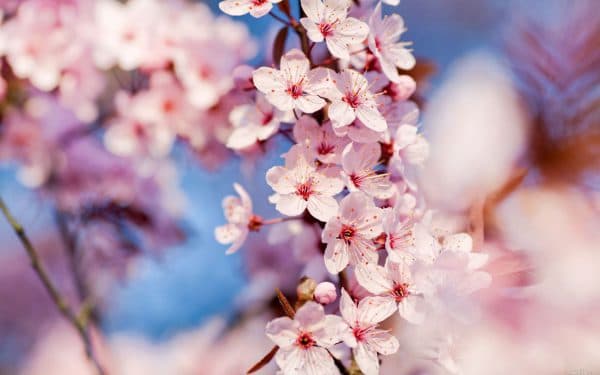

Depending on the variety, cherries are divided into early flowering, medium flowering and late flowering, so the flowering period can last from late April to early June.
Ripening terms
Similar to the timing of flowering, cherry varieties are early ripening, medium ripening and late ripening. The ripening time depends not only on the variety, but also on climatic conditions. In cold summer weather, the fruit will take longer to ripen than usual. If there are several trees of the same variety in the garden, then the one that is in the sun, and not in the shade, will ripen earlier. Berries should be picked off immediately, as they quickly crumble or birds will bite them. Fruits intended for transportation should be harvested 3-4 days ahead of schedule.
Watering the plant should be stopped two weeks before harvest.
Useful properties of fruits
Cherry is an extremely useful berry, more precisely a fruit, since from the point of view of botany, the fruit of the cherry tree is precisely a fruit. It contains the following substances:
- vitamins;
- trace elements;
- organic acids;
- Sahara;
- vegetable fiber.
The fruit is rich in vitamins A, C, E, PP and group B. It contains trace elements such as:
- potassium;
- sodium;
- calcium;
- phosphorus;
- manganese;
- iron.
Organic acids are represented by citric, malic, succinic and folic acids, and sugars are included in fruits in the form of glucose and fructose. 100 grams of fresh fruit contains only 52 kilocalories, so they are indicated for those on a diet.
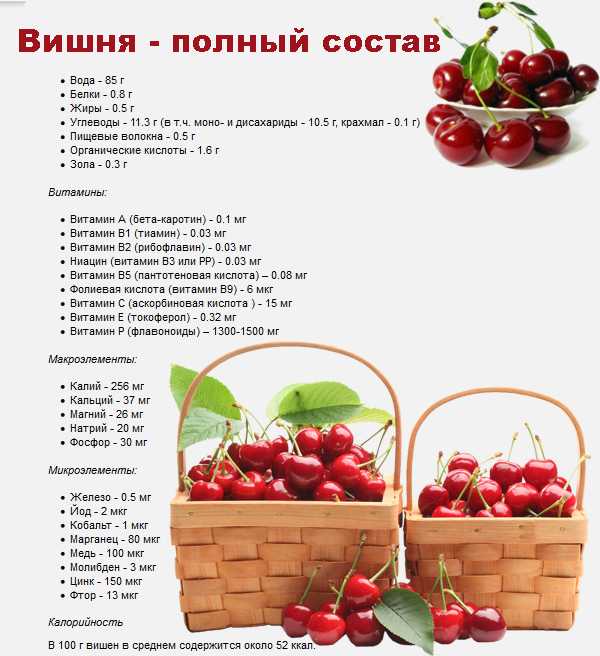

Figure: Vitamins and microelements contained in cherries.
Berries reduce the risk of blood clots and strengthen the cardiovascular system, normalize blood pressure and lower blood cholesterol levels. It is generally accepted that the darker the fruit, the more beneficial it is for the heart. Berries are good for children because they increase the level of hemoglobin in the blood. The juice enhances the effect of some drugs.
Cherries have a beneficial and activating effect on the body's immune system, but in order not to cause negative consequences, when eating fresh cherries, a sense of proportion should be observed.
Fresh berries have contraindications associated with the following diseases:
- ulcers of the stomach and duodenum;
- increased acidity;
- diabetes;
- inflammatory processes in the lungs.
The fruits are great for home canning and are widely used in cooking.
Felt cherry
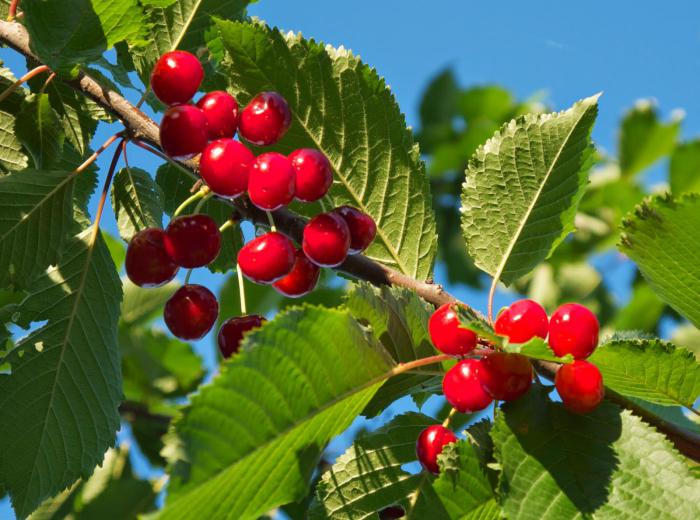

Felt cherry is a tree or shrub that has a large spreading crown with a small growth, about 1-3 meters. The homeland of this species is China, therefore the second name is Chinese cherry. It can be used both for decorative purposes and as a fruit tree. Flowers are densely and beautifully arranged on the branches. Its advantage is in early flowering, this is how it decorates the gardens, which still stand with bare branches.Leaves are small, oval, serrated. On the underside, they are pubescent, this creates the effect of velvety of the whole tree. The branches are thick with a rough bark, have a gray-brown tint. Flowers are small, pinkish-white in color. Felt cherry, tree or shrub, tolerates well not only winter frosts, but also spring colds. Cherry fruit is small in size, from red to almost black, sweet, juicy. The stone is small and does not separate from the berry. After ripening, the fruits of the felt cherry can remain on the branches for a long time, without losing their properties.
Varieties
Cherries are classified according to several characteristics, but the following varieties can be attributed to the main ones:
- type of tree;
- ripening period;
- fruiting.
The varieties are divided into tree-like and bush-like. In some classifications, intermediate species may be found.
The tree cherry has a trunk up to 5-6 meters high and a voluminous crown. Branches often form dense thickets and make harvesting difficult. On the shoots, group buds are formed, some of which are intended for the growth of new branches, and the rest for fruiting. Treelike varieties include Turgenevka, Zhukovka, Griot Moskovsky.
Bushy varieties are widespread due to their strong immunity and active fruiting. The height of the above-ground part usually does not exceed 2.5 meters. As a result of long-term selection, bushy varieties with large and sweet berries were obtained. Most of the harvest is placed on annual branches. The best representatives of shrub varieties are Schedra, Bolotovskaya, Molodezhnaya, Troitskaya.
According to the ripening time, cherries are divided into early and late ripening varieties. Often the ripening time depends on the weather conditions in the region. Early varieties include Early, Vstrecha, Baby. The berries are fully ripe at the end of June. The best representatives of late, July and August varieties are Lyubskaya, Bagryanka, Tamaris.
Cherry varieties can be self-fertile and self-fertile. The latter require pollinators.
Early ripening varieties and hybrids of cherry with bird cherry are less susceptible to fungal diseases.
The best winter-hardy cherry varieties for the middle lane
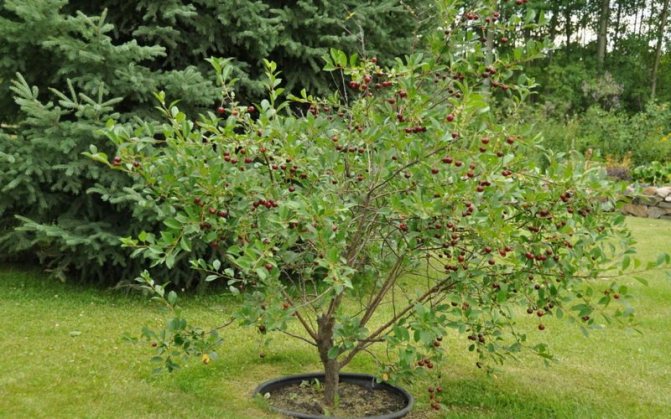

Growing cherries in the photo
To begin with, we present to your attention a photo and description of cherry varieties with increased winter hardiness.
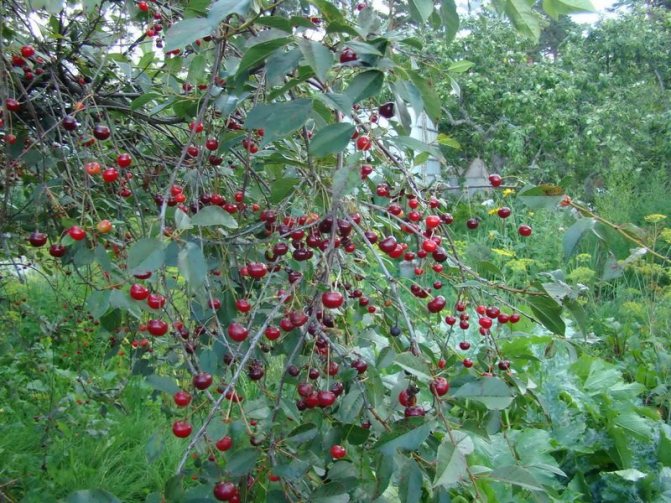

Cherry variety "Ukrainka" in the photo
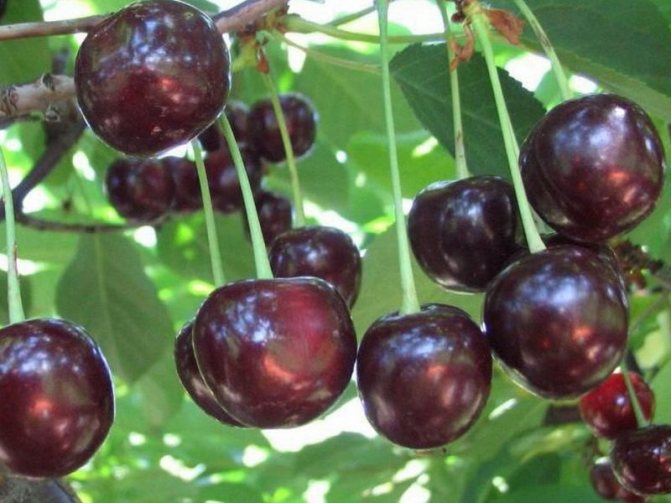

Cherry berry "Ukrainka" in the photo
Ukrainian. Comes from Vladimirskaya (Roditeleva). The tree or bush is strongly developed, with a hemispherical, widely spreading crown, with slightly hanging ends of the middle and lower branches. This cherry variety is winter-hardy, high-yielding, fast-growing, early. Propagated mainly by root suckers. Early flowering.
Fruiting on one-two-perennial wood, which differs from Vladimir (Roditeleva). Begins fruiting from the 3rd year. In the period of the highest yields (9-20 years) it gives 10-24 kg per tree on average, and from individual trees up to 40-50 kg.
Fruits are medium, about 3 g in weight, flat-round, dark purple, almost black, with dark pink pulp and thick dark red juice. The taste is good, sweet, with mild acidity. The stone is medium, flat-round, weight 0.26 g.
Fruits ripen at the beginning of July.
Consumption - fresh (the best dessert variety) and for technical processing: for wine, extracts, preserves and other products. Transportability is satisfactory.
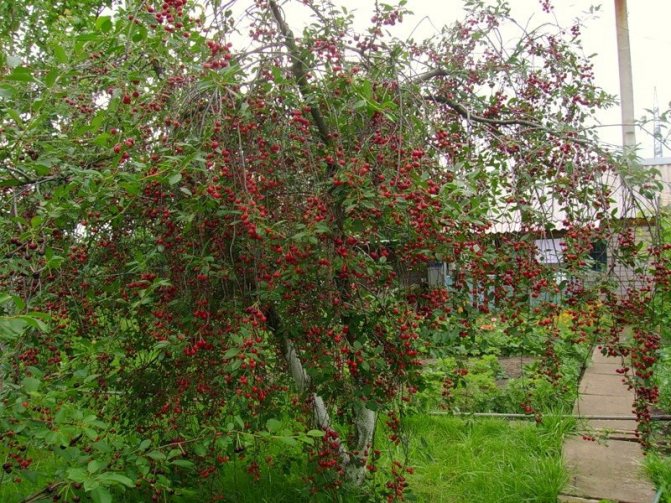

Cherry variety "Fertile Michurina" in the photo
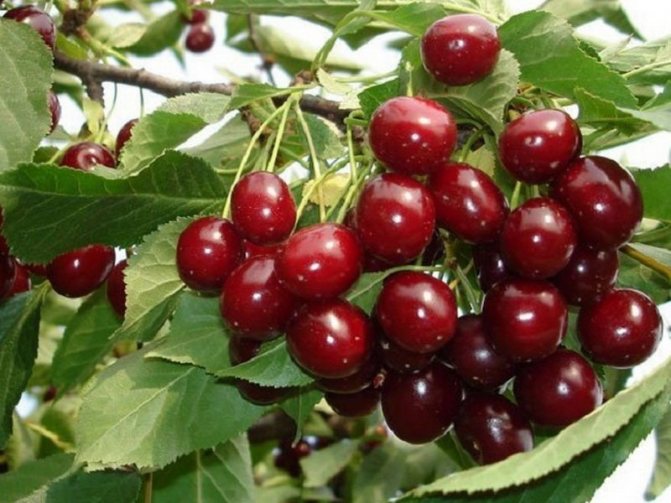

Cherry berry "Fertile Michurina" in the photo
Fertile Michurina. The tree is undersized, up to 2 m in height, with a wide spreading crown and hanging ends. This is one of the best winter-hardy cherry varieties with a high yield. Flowering and late ripening.
Begins fruiting from the 3rd year. The name of this cherry variety speaks for itself - this form is very fertile.In the period of increasing yields (4-9 years) it gives an average of 0.5-10 kg of fruits per tree, in the period of the highest yield - 12-16 kg per tree, and from individual trees - up to 20-25 kg.
The fruits are large, weighing about 4 g, rounded, dark red, with long stalks. The pulp is juicy, with pink juice, sweet and sour mediocre taste. The stone is large, oval, weight 0.35 g.
Fruit picking - mid - late August.
Consumption - fresh, but mainly for technical processing: for juices, wine, jelly, preserves, compotes.
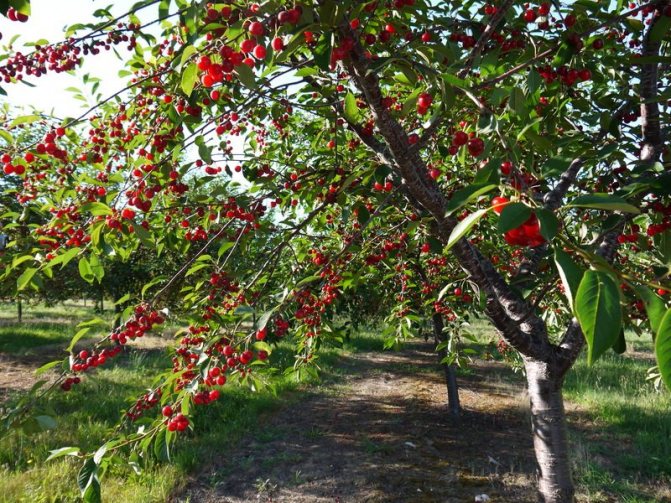

Cherry variety "Vladimirskaya" in the photo
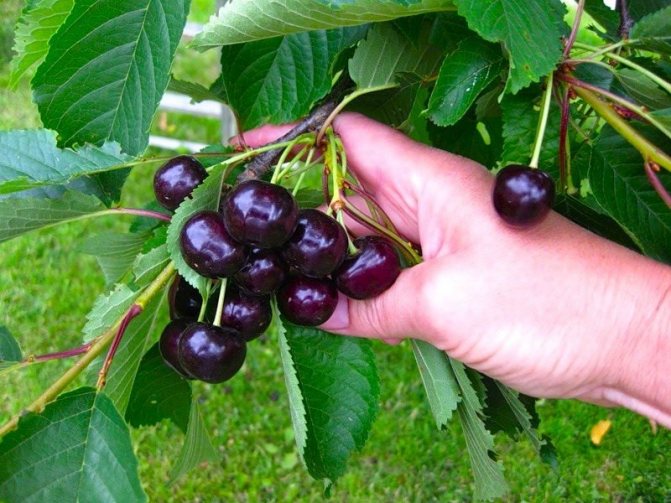

Cherry berry "Vladimirskaya" in the photo
Vladimirskaya (Poditeleva). A tree or shrub of moderate development, giving a spreading crown with drooping branches. The variety is winter-hardy, productive and fast-growing. Begins fruiting from the 3rd year. Early flowering. During the period of their growing harvests (4-8 years) it gives up to 8 kg of fruits per tree, during the period of the greatest harvests - 8-10 kg, and from individual trees - up to 30 kg.


The cherry variety "Vladimirskaya" has medium fruits, about 3 g in the photo
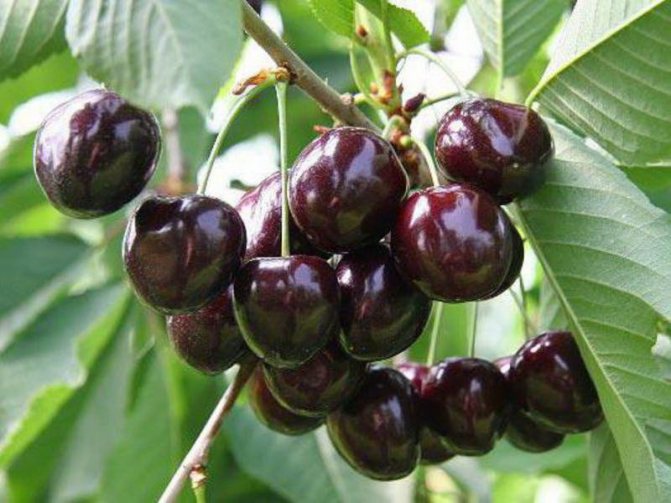

The cherry variety "Vladimirskaya" has flat-rounded fruits, dark red, almost black in the photo
As you can see in the photo, this cherry variety has medium fruits, about 3 g, flat-rounded, dark red, almost black.
The pulp is dark pink, with a thick, dark red juice, good, sweet, with mild acidity, taste. The stone is medium, flat-rounded, weighing 0.27 g.
Fruits ripen in early July.
The best variety for fresh consumption and technical processing: for wine, extracts, jellies, preserves, etc.
Growing
Cherry is a very popular plant among European gardeners. Despite its unpretentiousness, the plant needs proper planting and care. Most varieties are self-fertile, so pollinating trees need to be planted on the site. Read about how to plant cherries correctly.
Climatic features
Cherry, unlike other fruit trees, does not have high winter hardiness, therefore, it practically does not grow in the northern regions. Temperatures from -100C are considered dangerous for the cherry root system, and the buds of flowers and ovaries can die even at -10C, which is not uncommon with small spring frosts.
Cherries are not very demanding on sunlight and can grow normally in the shade, but they are best planted in elevated areas where there is both sun and a little shade.
Varietal hybrids for the Urals and Siberia
The low frost resistance of the plant is not an obstacle to its cultivation in the regions of the Urals and Siberia, since there are hybrids that are adapted to cold winters, short summers and frosts during transition periods. For these regions, the following early maturing varieties with high yields are suitable:
- Zagrebinskaya;
- gridnevskaya;
- Ural standard;
- lighthouse;
- Michurin's vole.
A complete list of cherry varieties for the Urals is presented here.
These hybrids are distinguished by good resistance to prolonged frosts and spring frosts, regular fruiting and high productivity.
The soil
For cherries, loamy and sandy loamy soils with a neutral pH (pH 7) are best suited. Do not plant the plant on sandy, peaty and acidic soils. In the absence of a choice, acidic soils can be used, but with the obligatory neutralization with chalk, lime or dolomite flour. It is also important to know what to plant next to cherries.
Humidity
Low-lying and too wet areas are not suitable for cherries, as they will suffer from fungal diseases. Cherries do not like high humidity and tolerate drought well. The groundwater level should not exceed 180-200 cm. The higher the groundwater level, the more chances that the plant will freeze roots.
Selection of seedlings for planting
Saplings must be purchased in a special nursery, where the plants are not resold, but grown. You should not choose tall seedlings with a lot of shoots.They have a developed root system and do not take root well. You need to buy annual seedlings with the number of shoots from 3 to 6 and their length from 10 to 20 cm.
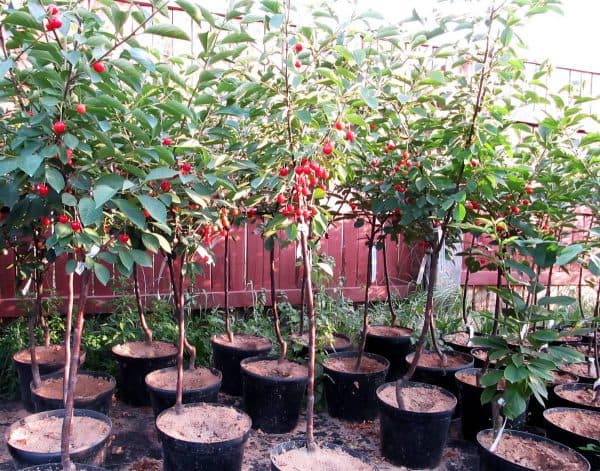

On the trunk and roots of the cherry seedling there should be no growths and mechanical damage and rot.
How many calories are in cherries
The benefits of the vitamin and mineral assortment for the body are complemented by the moderate calorie content of fresh or frozen cherries:
- 51-53 kcal per 100 grams of fresh product;
- 45-47 kcal - calorie content of frozen pitted cherries.
For dieters, processed options are contraindicated: 100 grams of dried or dried cherries is 285-295 kcal.
The calorie content of dried or sun-dried fruits is almost six times more than fresh ones.
Care
Cherry care includes a number of agrotechnical measures that are focused on obtaining a high yield and long-term preservation of a healthy and fruitful tree.
Top dressing and fertilizers
Cherries require regular fertilizing to avoid problems with growth, development and fruiting. Of the elements, cherries, first of all, require nitrogen, phosphorus and potassium. If enough fertilizer was applied to the planting hole during planting, then additional feeding is not required for about two years. How to feed cherries:
- ammonium nitrate;
- superphosphate;
- potassium chloride.
Until the age of five, the cherries are fertilized into the trunk circle, the diameter of which should be increased as the crown grows. Organic and mineral fertilizers should be applied together. Nitrogen fertilizers should be applied in the spring, and the components with phosphorus and potassium in the autumn. Fresh organic matter must be replaced with compost or humus.
Watering
Cherries do not need abundant watering, so during the season, for each tree, 4 to 8 buckets of water are consumed. Ring grooves are dug around the trunk, starting from 50 cm. They should cover an area equal to the area of the crown. With one watering, 10-15 liters of water are consumed per tree, evenly distributing it along the furrows. To prevent moisture from evaporating, the irrigation site is mulched with humus or cut grass.
Pruning
For the correct development of cherries, it should be cut off annually, since the very rapid growth of the shoots stimulates the thickening of the crown. Pruning should be done in the spring before budding. At a seedling, when planting, all branches are immediately removed except 5-6, and the pruning sites are smeared with pitch. Starting from the second year, it is necessary to remove all branches growing inside the bush, and in tree varieties, branches that are actively growing up are also cut off. Dried and damaged branches should be removed regularly. When and how to properly prune cherries, read this material.
Removing overgrowth
Cherry annually forms abundant root shoots, often extending tens of meters from the mother tree. In order to get rid of cherry shoots, in no case should you dig out new trees. Next year, instead of one plant, 3 or 4 will appear in this place. It is enough to cut them with pruning shears to a height of 15-20 cm. This root will not give more vegetation. You can dig vertical sheets of slate or plastic into the ground at a distance of 1-1.5 meters from the trunk. They will not allow horizontal shoots to actively develop.
Bird protection
Protecting cherry crops from birds is a constant problem for gardeners. How to protect cherries from birds - 9 ways are presented in this article. Birds are afraid of noise, so strips of crisp cellophane hanging on trees or old magnetic tape from cassettes will scare the birds away. Reflections of light also scare birds away.
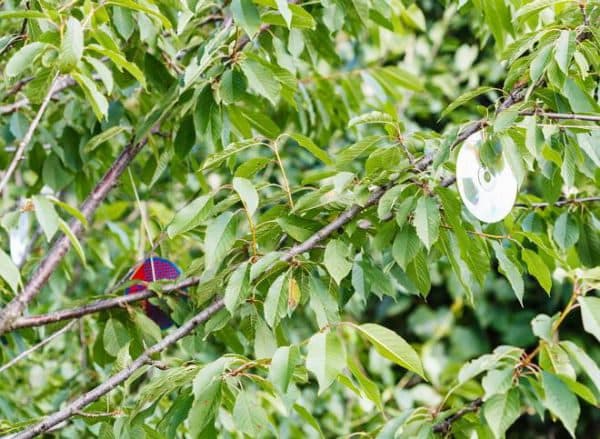

You can hang pieces of foil or old optical discs on the branches. An effective way is to purchase and place a compact ultrasonic generator in the garden.
Pruning bush cherries
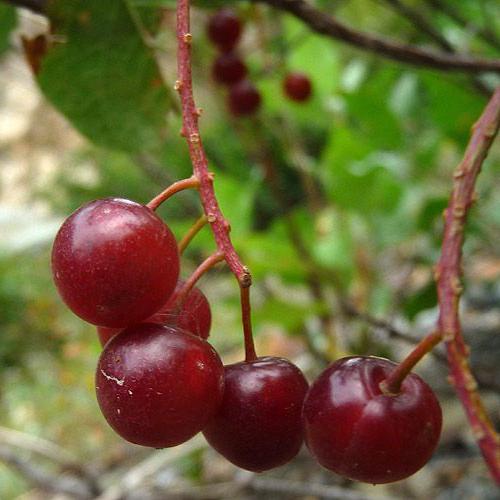

Bush cherry branches tend to grow strongly, so they need to be pruned annually.This is done competently, since cherry reacts worse to pruning than other trees and bushes. This process is carried out the next year after planting. The period must be chosen when the bush is still in winter sleep. It could be late February or early March.
When pruning, it is recommended to leave the bole 30–50 cm from the ground. In the first year of pruning, 5–7 strong branches are left, which are at a distance from each other and directed in different directions. In the second year of pruning, all branches are cut out that are directed to the center of the bush. During the spring-summer period, green shoots will appear on the trunk, which must be cut off immediately. If the bush is running, then such shoots are removed already during the spring pruning of the bush.
With annual pruning, a bush is formed and branches that grow inward are removed so that the bush is not very thick. Also, dried and dead shoots are removed, and instead of them young ones are left for replacement. Bush cherries often develop root growth, which should be removed by pruning just below ground level. If this is done above, then a new bush will form from such a growth, and the shoots will begin to branch.
Diseases and pests
Among cherry diseases, fungal diseases are common, which can destroy the cherry tree in a short time. These include the following pathologies:
- stem rot;
- monilial burn;
- chlorosis;
- cocomycosis;
- clasterosporium disease.
To combat these diseases, as well as to prevent them, it is necessary to regularly spray the cherries with preparations containing copper. These include Bordeaux liquid and HOM and Abiga-Peak preparations. Insecticides should be used to control pests.
Useful properties and application
Cherries (trees and shrubs of any kind) have many useful properties and qualities not only in fruits, but also in branches, foliage and even in the petioles of berries.
Cherry fruits improve appetite and have dietary properties, and their syrup is often used in pharmaceuticals. It is also useful to eat berries with low hemoglobin. They contain substances that contribute to the normalization of blood coagulation.
For treatment, the sap of a tree called cherry glue is used. It contains such useful substances as sugar pentose, galactose, arabinose. Cherry glue envelops the walls of the stomach and helps with inflammation of its mucous membranes.
Cherries are often used in folk medicine, for example, the root of a tree is used to treat ulcers. Fruit pulp and juice are used as an antiseptic. And if the juice is mixed with milk, then you can treat inflammation of the joints.
A decoction of the stalks is also often used for bloating and diarrhea. This recipe is known in almost every family.
Berry or fruit
Another question that often worries gardeners: is a cherry a fruit or a berry? Usually these two words are used when listing fruits. They are of equal origin: both are the fruits of shrubs or trees, but have a number of differences in structure.
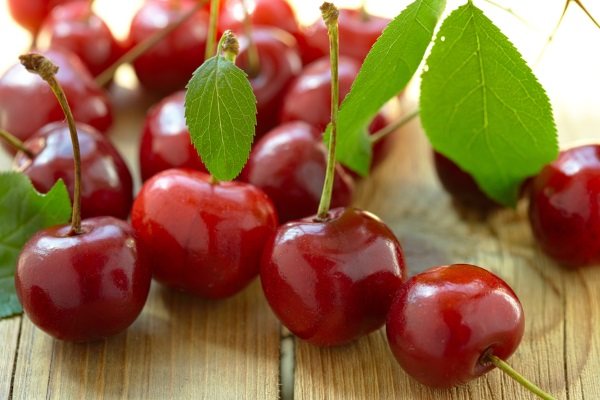

Fruit and berry is a juicy, edible part of any plant, fruit, which was formed from a flower and then from an ovary. Subsequently, seeds appear from them for plant reproduction. According to this conclusion, it can be argued that vegetables and berries are also fruits, since they contain seeds.
The fruit is large compared to the berries. To take the first, you need to use both hands, and two fingers are enough for the berry. Another distinguishing feature is the toxicity of the berries, the fruits do not have such a characteristic.
Still, the berry is a smaller type of fruit, which also applies to the cherry. Some cherry fruits are large in size, for example, sweet cherries, which reach 8 g, in comparison with sakura or glandular cherries, which have a large pit and little flesh around it.
In general, we made a comparison between cherry bush and cherry tree. Both are found in nature, their types and varieties are different.And you can argue in the affirmative about cherry fruits, like a fruit, since a berry is just a variety of it.
Sakura, or Japanese cherry
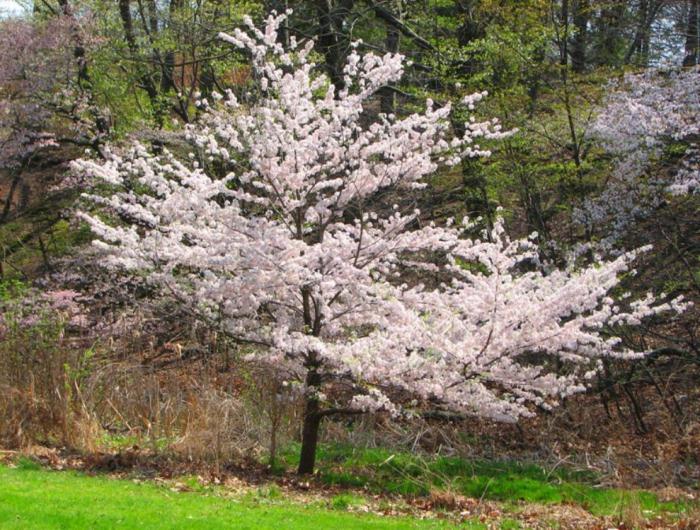

The Japanese cherry, or sakura, is more of an ornamental tree than a fruiting one. Its homeland is Japan, where various varieties of cherries grow in all regions. Every year, the locals celebrate the arrival of spring with the beginning of cherry blossoms. The tree grows in height up to 4 meters, its crown is spreading, umbrella-shaped, in width it can also reach 4 meters. The branches are long, flowing. The leaves are narrow, ovoid, pointed at the ends. In the summer they are painted bright green, and by autumn they acquire a yellow color. The flowers are small pink, each of them is located on a petiole. The flowering period is mid to late spring.

